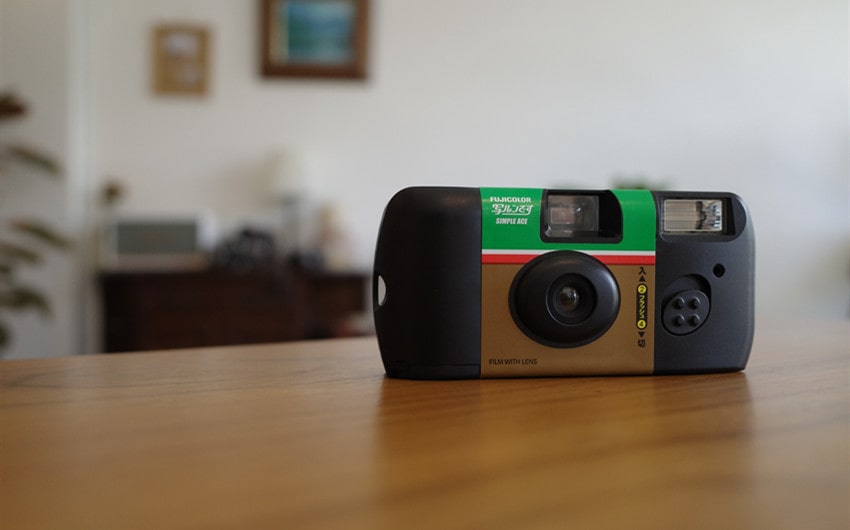Can Disposable Cameras Go Through TSA? What I Learned at Security
I didn’t think twice when I packed a disposable camera for a recent trip through LAX. But standing in the security line, watching my bag inch closer to the scanner, I suddenly wondered—can disposable cameras go through TSA without getting ruined? Turns out, yes—but there’s a little more to the story than a simple yes or no. Here’s everything I learned, from firsthand experience to what I wish I knew before my trip.
The Quick Answer
Disposable cameras can go through TSA checkpoints, and most of the time, they’re fine. The X-ray scanners used for carry-on baggage at airports in the U.S. are considered low-dose, which means a single pass through them typically won’t ruin your film—especially if it’s ISO 800 or below, which most disposable cameras use. That said, if your film gets scanned multiple times during a multi-leg journey or you’re carrying higher-speed film, there’s a real risk of fogging or image degradation. That’s where a simple request for a manual inspection can save you a lot of disappointment.
It’s important to know that checked baggage is a different story. The scanners used for checked bags are significantly more powerful and can definitely ruin film, even on a single pass. Always carry your disposable camera in your carry-on and never check it in.
Ultimately, if you’re flying direct and your disposable camera has ISO 400 film or less, it’s likely to be fine. But if you value those photos or are flying multiple legs, it’s well worth making the request for a hand inspection.
How X-Rays Affect Film
X-rays expose film to ionizing radiation, which can fog or cloud the image—especially with repeated exposure. The effect isn’t always dramatic at first, but it can show up as a subtle loss of contrast, odd coloring, or cloudy streaks across your images. And since you can’t check the results until the film is developed, you won’t even know it’s been damaged until it’s too late to fix.
Lower ISO film (like ISO 100 or 200) is a bit more resistant to X-ray damage, but higher-speed film (ISO 800 or more) is particularly sensitive. Most disposable cameras use ISO 400 or ISO 800 film, which makes them moderately vulnerable. That means even one trip through a scanner can have visible effects, and repeated passes—like when flying through multiple airports or going abroad—can seriously compromise your images.
That’s why film photographers and analog lovers always stress: if in doubt, ask for a hand check. It’s not just precaution—it’s about preserving moments that you can’t recreate. Each frame in a disposable camera is a one-time shot. There are no redos, and every detail counts.
When to Ask for a Hand Check
Asking TSA for a hand check is your best bet if you’re even slightly worried about protecting your film. Fortunately, TSA guidelines explicitly allow for hand inspection of film and disposable cameras, and most agents are familiar with the process.
There are specific situations where you should always ask for a hand inspection:
- Multiple Flights: Cumulative X-ray exposure builds up. If you’re hopping through several airports, even lower-speed film can be affected.
- High ISO Film: If your disposable camera uses ISO 800 film (check the box or label), it’s more sensitive. Some specialty film cameras go even higher, and those should never be scanned.
- International Travel: Scanners abroad may vary in intensity, and repeated scans on return trips only increase the risk.
- Irreplaceable Memories: Special occasions, unique locations, or once-in-a-lifetime trips deserve extra care. You won’t get those moments back if the film’s fogged.
Don’t be afraid to speak up. I simply say, “Hi, I have a disposable camera with film inside. Could I get a hand check instead of it going through the X-ray?” So far, I’ve never had anyone turn me down. A quick swab and visual check is all it takes, and you’re on your way.
Tips for a Smooth TSA Experience
Getting a hand check doesn’t have to be awkward or time-consuming. Here are a few things I’ve learned to make it easy:
- Keep It Accessible: Don’t bury your camera at the bottom of your bag. Keep it near the top in a small clear pouch or ziplock bag so you can grab it easily.
- Ask Early: Let the TSA officer know before your items hit the belt. Giving them a heads-up gives them time to react before the camera disappears into the scanner.
- Be Calm and Friendly: Most officers are understanding and helpful, especially if you ask respectfully. A polite explanation goes a long way.
- Bring Proof (Optional): If you’re nervous, print out TSA’s official film policy. It can be helpful if you encounter an agent who isn’t familiar with the hand-check option.
I’ve had agents thank me for the clear communication, and the whole process never takes more than a couple of minutes. It’s a small step that gives you a lot of peace of mind.
What Happened to My Photos?
On my last trip, I took two disposable cameras: one that went through the scanner because I forgot to ask, and one that I kept out for a hand check. The difference was subtle, but it was there. The scanned roll came back with a slight haze, and some of the night shots had less contrast than I remembered. The hand-checked roll, on the other hand, was clean—sharp, vibrant, and rich in detail.
It’s not always a dramatic difference, but it’s enough that I now ask every time. When you’re shooting film, every frame counts. Whether it’s the golden glow of a sunset or a blurry street scene that somehow feels perfect, those are moments I want to remember clearly.
So—Can Disposable Cameras Go Through TSA?
Yes, they can. But the better question is—should they? If you’re okay with a small risk and you’re only flying once with standard film, you’re probably fine. But if those photos matter, or if you’re taking multiple flights, asking for a hand check is the smarter move.
Disposable cameras may be simple, but what they capture is anything but. They’re about memory, emotion, and moments you can’t recreate. I’ll keep carrying mine—and I’ll keep asking. Because some things are worth protecting, even if it’s just a plastic box full of unprocessed light.







